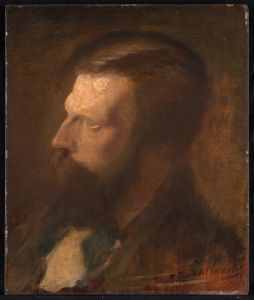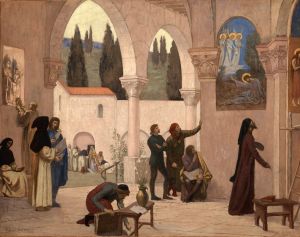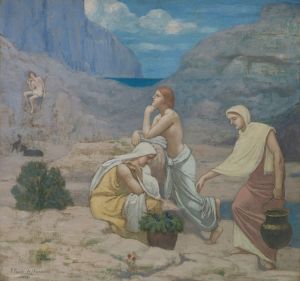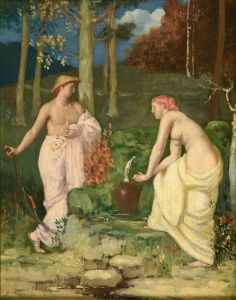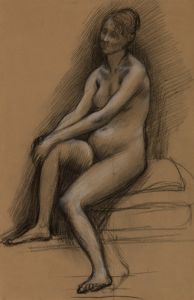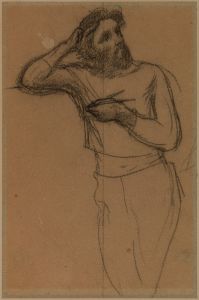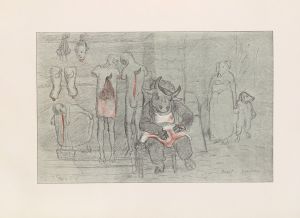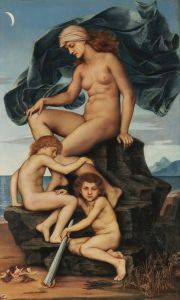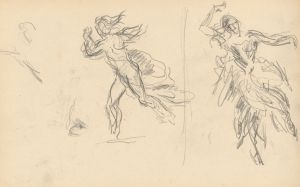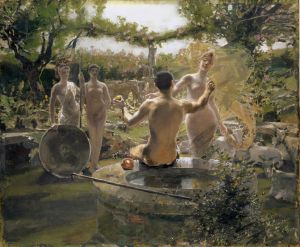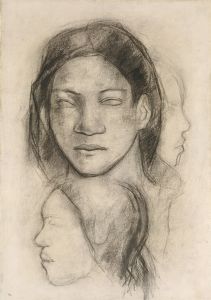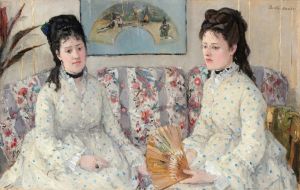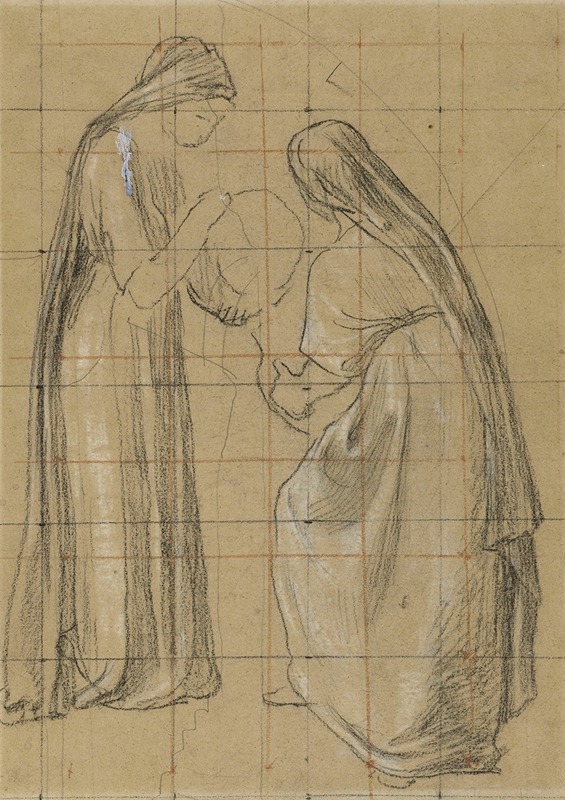
Deux femmes voilées
A hand-painted replica of Pierre Puvis de Chavannes’s masterpiece Deux femmes voilées, meticulously crafted by professional artists to capture the true essence of the original. Each piece is created with museum-quality canvas and rare mineral pigments, carefully painted by experienced artists with delicate brushstrokes and rich, layered colors to perfectly recreate the texture of the original artwork. Unlike machine-printed reproductions, this hand-painted version brings the painting to life, infused with the artist’s emotions and skill in every stroke. Whether for personal collection or home decoration, it instantly elevates the artistic atmosphere of any space.
Pierre Puvis de Chavannes, a prominent 19th-century French painter, is known for his allegorical and symbolist works that often convey a sense of timelessness and serenity. Among his lesser-known works is Deux femmes voilées (Two Veiled Women), a painting that reflects his characteristic style of subdued color palettes and contemplative figures.
The exact date of creation for Deux femmes voilées is not widely documented, but it is consistent with Puvis de Chavannes' broader body of work, which often explored themes of spirituality, mystery, and the human condition. The painting depicts two women, both veiled, seated or standing in a quiet, introspective pose. The veils obscure their faces, adding an air of mystery and inviting viewers to interpret the scene's meaning. The composition is marked by simplicity and restraint, with the figures set against a muted background that emphasizes their presence while avoiding unnecessary detail.
Puvis de Chavannes was a key figure in the transition from academic art to modernism, and his works often bridged classical traditions with emerging symbolist ideas. His paintings frequently evoke a sense of universality and timelessness, and Deux femmes voilées is no exception. The veiled figures may suggest themes of concealment, introspection, or spirituality, though Puvis rarely provided explicit narratives for his works, leaving much to the viewer's interpretation.
The painting is believed to have been executed in oil, a medium Puvis commonly used, and it demonstrates his mastery of tonal harmony and composition. The subdued color scheme, a hallmark of his style, creates a meditative atmosphere that aligns with the contemplative nature of the figures. While Puvis de Chavannes is best known for his large-scale murals, such as those in the Panthéon in Paris, smaller works like Deux femmes voilées showcase his ability to convey profound emotion and meaning in more intimate formats.
As of now, detailed information about the painting's provenance, current location, or exhibition history is not readily available. It is possible that the work resides in a private collection or a lesser-known museum, as many of Puvis' smaller works are not as widely exhibited as his monumental murals.
Puvis de Chavannes' influence on later artists, including the Symbolists and early modernists, underscores the importance of his oeuvre. While Deux femmes voilées may not be as famous as some of his other works, it remains a testament to his skill in creating evocative and thought-provoking imagery.





